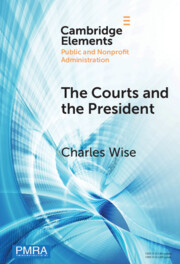Element contents
The Courts and the President
Published online by Cambridge University Press: 22 May 2024
Summary
- Type
- Element
- Information
- Online ISBN: 9781009303033Publisher: Cambridge University PressPrint publication: 20 June 2024
References
- 1
- Cited by



